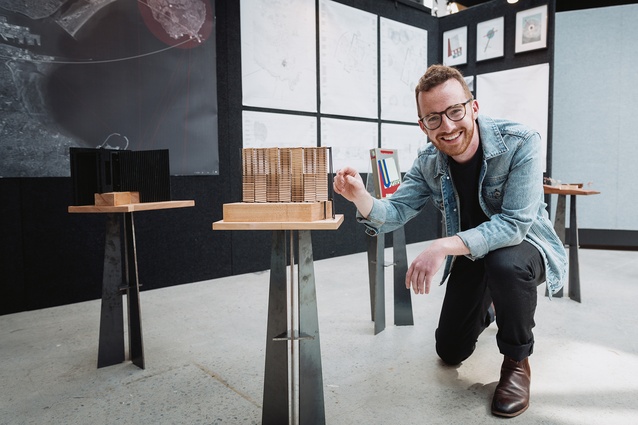F. Gordon Wilson Fellowship for Public Housing 2024 winner
Patrick Kelly, an architect working in Naarm Melbourne, Australia, has been awarded the 2024 F. Gordon Wilson Fellowship for Public Housing by Te Kāhui Whaihanga New Zealand Institute of Architects. The fellowship recipient was announced at the New Zealand Architecture Awards on 22 November 2024.
Kelly who spent three years working on an extensive retrofit programme of Kāinga Ora houses at Jerram Tocker Barron Architects and led a project at architecture+ that examined how Medium Density Residential Standards could be used by community housing providers to densify existing sites, will embark on the fellowship early in 2025.
The Fellowship has awarded Kelly with $20,000 to undertake research into Bluefields, an urban infill housing model, and how it might transform existing state housing stock in Aotearoa. Developed by Australian architectural academic Damian Madigan, Bluefields is a way to densify older, low-rise housing, where the dwellings typically occupy only 20-25 percent of the land. Kelly will research how additional one- and two-bedroomed homes can be added to existing state-owned sections in cities around the country. The additional dwellings will be designed according to the constraints of the site and placed around shared gardens and other communal facilities. The idea is to achieve a greater quantity of smaller homes for social housing, without subdividing land.
“Bluefield developments offer a way to modify and develop around existing infrastructure to better reflect the current needs of public housing in Aotearoa,” explains Kelly. “With some of the highest construction costs in the world and an increasing demand for public housing, there is an urgent need to rethink possible housing development strategies. This model of development could offer the opportunity to unlock Aotearoa’s public housing potential.
“Receiving this fellowship reinforces my belief in the opportunity that architecture can bring to community and will enable me to refine my ideas, conduct essential research, and develop practical strategies to implement these innovative solutions effectively,” says Kelly, who works at Breathe Architecture, a Naarm Melbourne studio with a specific focus on sustainable and affordable housing. “With the support of this fellowship, I am more empowered than ever to advocate for and advance the potential of public housing in our society.”
Julia Mandell, granddaughter of the renowned architect F. Gordon Wilson, who designed Aotearoa’s state housing in the 1940s and 1950s, says her family is “very pleased with this year’s winning fellow. Patrick’s proposal offers an actionable, pragmatic approach of incremental densification. His ideas are grounded in what is, for a young designer, an impressive depth of experience with the design and maintenance of New Zealand’s public housing stock. We’re confident that the results will be useful and thought-provoking.”
Created in memory of F. Gordon Wilson, the eponymous fellowship is designed to generate architectural research into Aotearoa’s unmet housing needs. The inaugural fellowship was awarded to Mitra Homolja and Ellie Tuckey in 2023, founders of Third Studio to complete a survey of mātauranga Māori perspectives on resilience to climate change.
The 2024 Fellowship jury members were Huia Reriti, perehitini president of Te Kāhui Whaihanga New Zealand Institute of Architects; Dr Kay Saville-Smith, HUD Chief Science Advisor for the Ministry of Housing and Urban Development and Research Director, Centre for Research, Evaluation and Social Assessment; Marko den Breems, CEO of Isthmus Group; Peter McPherson, Head of School, School of Architecture, Te Whare Wānanga o Wairaka Unitec; and Julia Mandell.
About F. Gordon Wilson
Born in Perth, Australia, F. Gordon Wilson’s career in Aotearoa New Zealand included positions as Chief Architect of the Department of Housing Construction (1936–1943), Chief Architect of the Housing Division of the Public Works Department (1943–1952), Assistant Government Architect (1948–1952), and Government Architect (1952–1959). He was tasked by Prime Minister Michael Joseph Savage and his Labour Government to help tackle the nationwide housing crisis and went on to lead the design of an innovative state housing programme, which included thousands of new single duplex and multi-unit houses, as well as internationally recognised modernist apartment buildings.
The New Zealand Architecture Awards receive generous support from Resene, a steadfast sponsor of the program since 1991, and APL, which commenced its sponsorship of the awards in 2021.










